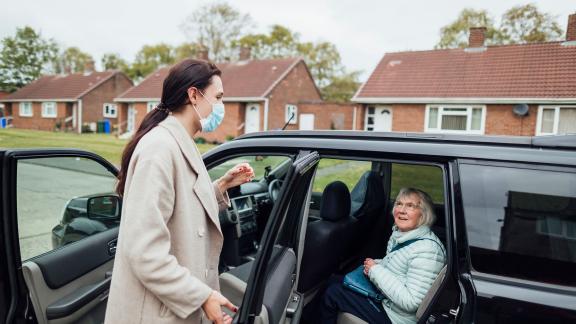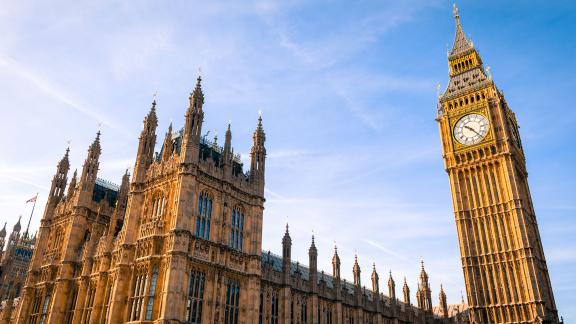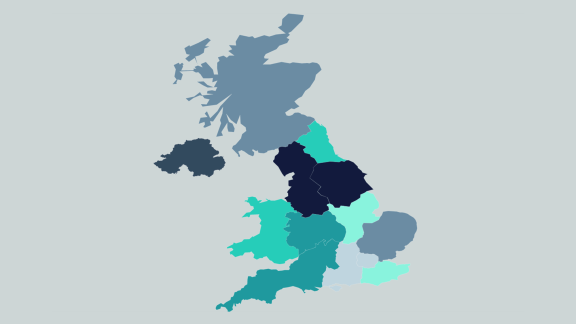Inclusive recruitment: supporting economic recovery

This briefing is for workforce leaders and HR professionals in the NHS.
It outlines initiatives that can assist organisations and system people boards, to deliver on the commitments made in the NHS People Plan, in particular those relating to ‘overhauling recruitment practices’ and ‘recruiting from your community’.
It offers options for you to discuss and action locally, within your organisation and/or system people board and with partners across your region.
Introduction
COVID-19 has pushed the UK into an unprecedented recession. The economy had some reprieve with the relaxation of lockdown restrictions last summer, but with additional lockdowns, the economic outlook remains uncertain. In response, the government has introduced several employment initiatives to keep people in work and help people who have lost jobs to get back into employment.
As part of your workforce supply strategy, and in response to the People Plan at either a system or organisational level, these initiatives can help you to support and build your workforce and strengthen it for the future. In addition, by widening access to good-quality work and careers to local people, you can play a key role in lessening some of the economic impact of the pandemic and support local recovery.
Labour market overview
The latest figures show a further increase in both unemployment and redundancies.
The UK unemployment rate (Sep-Nov 2020) is estimated at 5 per cent, which is 1.2 per cent higher than a year earlier[1]. Economists forecast the unemployment rate could reach 6.7 per cent by the end of 2021[2].
Redundancies have increased to 395,000, the highest recorded level since comparable records began in 1995. This figure is expected to increase when the coronavirus job retention scheme ends at the end of April 2021.
The UK claimant count (which measures the number of people claiming benefit principally for the reason of being unemployed) has increased by 113.2 per cent since March 2020.
Workers from black and minority ethnic (BME) backgrounds, women, young workers, low paid workers and disabled workers are amongst those most negatively economically impacted by COVID-19.
The youth unemployment rate (16 to 24 year olds) is 14.2 per cent[3].
People from black (11.6 per cent) and Pakistani (11.1 per cent) ethnic backgrounds had the highest rates of unemployment in July-September 2020[4].
However, people from all backgrounds and skills sets face unemployment as a result of COVID-19 and the NHS is well placed to offer a wide variety of roles to meet the aspirations of local people.
Unemployment rate by region (September to November 2020):
The NHS workforce
Despite the recession, workforce shortages are an ongoing challenge for the NHS, with 87,237 vacancies across all staff groups in September 2020. 36,655 of these vacancies are for nurses.
|
Region |
Total workforce vacancy FTE- 2020/21 Q2 (Sep-20) |
Total workforce % vacancy rate - 2020/21 Q2 (Sep-20)[5] |
|
East of England |
9,510 |
8.1 % |
|
London |
21,653 |
9.6 % |
|
Midlands |
17,019 |
7.3 % |
|
North East and Yorkshire |
9,381 |
4.6 % |
|
North West |
11,379 |
6.0 % |
|
South East |
12,705 |
7.6 % |
|
South West |
5,588 |
4.8 % |
The NHS employs 1.3 million people and 19.7 per cent are from a BME background[6]. Additionally, the workforce is aging, with five per cent of staff under 25 and 47 per cent over 45[7]. By using the recruitment initiatives outlined below, you can recruit the groups in your community who have been directly impacted by COVID-19.
The NHS as an anchor institution
As the NHS is often the largest employer in a region, it is a critical source of employment for local people. With more than 350 different clinical and non-clinical roles available within the NHS and the opportunity to retrain, upskill and carve out a sustainable career, it is ideally placed to recruit unemployed local people.
By opening routes to people who may not have previously considered or been aware of the variety of roles and careers available, you can ensure your workforce reflects the diversity of your local community and supports the ambitions and aspirations of local people. This is a key ask within the NHS People Plan.
Health and employment
The link between health and employment is well known. Being in work improves people’s lives from an economic standpoint and it also improves their overall health and wellbeing, reducing the risk of mortality and morbidity.
Job losses at the current scale will have a detrimental impact on an individual’s health and wellbeing, particularly given the breadth of sectors affected such as, aviation, hospitality and leisure and retail sectors. Many of these roles require similar skills and values to equivalent roles in the NHS.
By helping local people back into work and recognising their transferable skills, organisations can continue to improve the health and wellbeing of local communities.
Initiatives to support access to employment
Many systems and organisations are already working in partnership to recruit at scale in response to roles needed, such as, vaccinators for COVID-19. The following initiatives have been introduced by the government, to provide additional options for you to consider, for implementation locally or across systems and will support the ambitions you have set locally in response to the NHS People Plan.
In doing so, you could enable local people to access good-quality work and address inequalities in your communities. Many organisations and systems are already working alongside local councils and local enterprise partnerships (LEPs) on these initiatives and we have outlined some examples below.
The kickstart scheme
The scheme will create six-month work placements for those aged 16-24-years, who are on universal credit and are deemed to be at risk of long-term unemployment. The government will cover 100 per cent of the relevant minimum wage for 25 hours a week, plus associated national insurance contributions and employer minimum auto-enrolment pension contributions.
Employers will also receive £1,500 funding per job placement for setup costs and to support the young person develop their employability skills. Visit the kickstart scheme
Traineeships
A traineeship is a skills development programme for 16- to 24-year-olds, (or 25-year-olds with an education, health and care (EHC) plan) that includes a work placement. It can last from six weeks up to one year and helps young people who are motivated, but not yet ready for the apprenticeship or job they wish to apply for. Traineeships are delivered by training providers and the cost of the training is met by government funding.
Employers can claim an additional payment of £1,000 for every trainee that starts and completes a work placement between 1 September 2020 to 31 July 2021. Information on traineeship funding can be found on the traineeships web page.
Apprenticeships
Employers can now receive £2,000 for each new apprentice hired, under the age of 25 years and £1,500 for each new apprentice hired, aged 25 years and over, up to 31 March 2021. Full details of the funding rules can be found on the apprenticeship funding web page
Apprenticeships are a cost-effective way to tackle your current and future supply challenges and contribute to a skilled, diverse, flexible and motivated workforce. Higher-level apprenticeships can attract talented local people into professional roles they would not have otherwise considered.
The Prince’s Trust
The Prince’s Trust health and social care programmes can improve access for young people (aged 16-30 years) to entry-level roles and apprenticeships in the NHS. Due to COVID-19, face-to-face programmes have been adapted to run online. The Prince’s Trust is also working with a number of integrated care systems (ICSs) to support recruitment to the COVID-19 vaccination programme. Visit our Prince’s Trust web page.
Restart scheme
Due to launch in June 2021, the three-year restart scheme will give universal credit claimants who have been out of work for at least 12 months, enhanced support to find jobs in their local area. Providers will work with employers, local government and other partners to deliver tailored support for individuals. Visit the restart scheme website.
In summary
The information we’ve highlighted in this briefing demonstrates the scale and urgency needed to support local economic recovery. The long-term economic impact of COVID-19 and the consequences for the health and wellbeing of local communities means that action is crucial now to ensure that:
- local people can access our vacancies and build sustainable careers in the NHS
- our workforce reflects the diversity of our communities, a core requirement of the People Plan for organisations and system people boards.
Next Steps:
NHS Employers will continue to work with you and further develop our suite of tools and resources to assist you in this agenda. For example, we plan to revisit our measuring up tool to enable analysis at an ICS footprint level, however we would welcome any additional suggestions or feedback you have. Please forward these to: ciara.luscombe@nhsemployers.org or workforcesupply@nhsemployers.org.
Footnotes
[1] Office for National Statistics, Labour Market Overview, UK: December 2020.
[2] House of Commons Library (January 2020), Coronavirus: Economic Impact.
[3] House of Commons Library (December 2020), Youth Unemployment Statistics.
[4] House of Commons Library (November 2020), Unemployment by Ethnic Background.
[5] NHS Digital (November 2020), NHS Vacancy Statistics England April 2015 – September 2020 Experimental Statistics.
[6] NHS England and NHS Improvement (2019), Workforce Race Equality Standard 2019 Report.
[7] NHS Digital (December 2020), NHS Workforce Statistics - September 2020.



